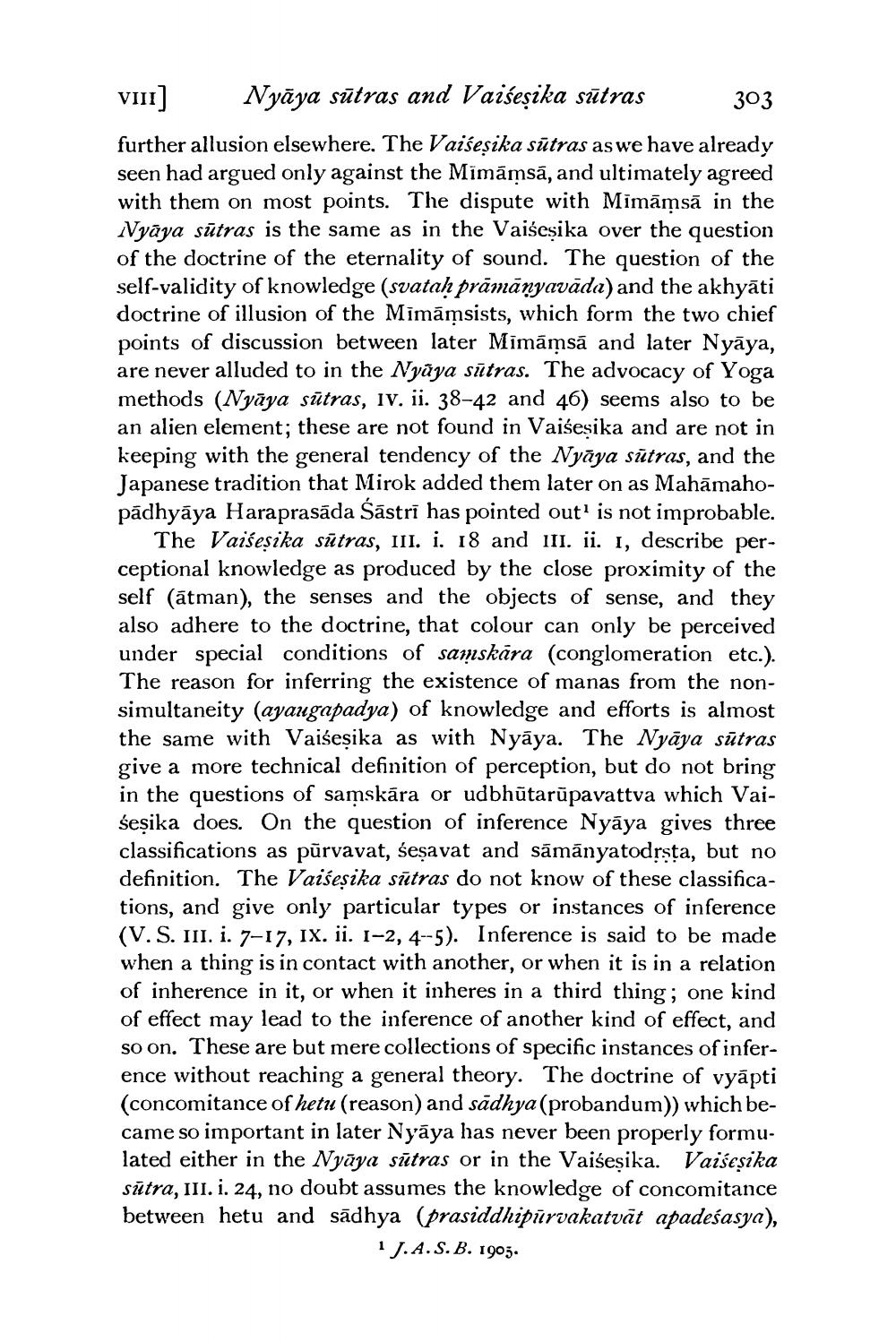________________
VIII]
Nyaya sutras and Vaiseṣika sūtras
303
further allusion elsewhere. The Vaiseṣika sutras as we have already seen had argued only against the Mimāmsā, and ultimately agreed with them on most points. The dispute with Mimāmsā in the Nyaya sutras is the same as in the Vaiseṣika over the question of the doctrine of the eternality of sound. The question of the self-validity of knowledge (svataḥ prāmānyavāda) and the akhyāti doctrine of illusion of the Mimāmsists, which form the two chief points of discussion between later Mīmāmsā and later Nyāya, are never alluded to in the Nyaya sutras. The advocacy of Yoga methods (Nyaya sūtras, IV. ii. 38-42 and 46) seems also to be an alien element; these are not found in Vaiseṣika and are not in keeping with the general tendency of the Nyāya sūtras, and the Japanese tradition that Mirok added them later on as Mahāmahopādhyāya Haraprasāda Śāstrī has pointed out1 is not improbable.
The Vaiseṣika sūtras, III. i. 18 and III. ii. I, describe perceptional knowledge as produced by the close proximity of the self (atman), the senses and the objects of sense, and they also adhere to the doctrine, that colour can only be perceived under special conditions of samskara (conglomeration etc.). The reason for inferring the existence of manas from the nonsimultaneity (ayaugapadya) of knowledge and efforts is almost the same with Vaiseṣika as with Nyaya. The Nyaya sutras give a more technical definition of perception, but do not bring in the questions of samskāra or udbhūtarūpavattva which Vaiśeşika does. On the question of inference Nyaya gives three classifications as pūrvavat, seṣavat and sāmānyatodṛṣṭa, but no definition. The Vaiseṣika sutras do not know of these classifications, and give only particular types or instances of inference (V. S. III. i. 7-17, IX. ii. 1-2, 4--5). Inference is said to be made when a thing is in contact with another, or when it is in a relation of inherence in it, or when it inheres in a third thing; one kind of effect may lead to the inference of another kind of effect, and so on. These are but mere collections of specific instances of inference without reaching a general theory. The doctrine of vyapti (concomitance of hetu (reason) and sadhya (probandum)) which became so important in later Nyāya has never been properly formulated either in the Nyaya sutras or in the Vaiseṣika. Vaišeṣika sūtra, III. i. 24, no doubt assumes the knowledge of concomitance between hetu and sadhya (prasiddhipūrvakatvāt apadeśasya), 1 J.A.S. B. 1905.




